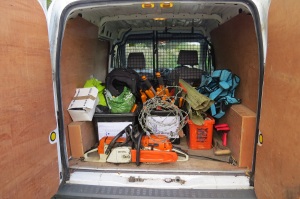Hoping for a pine marten, a top predator, to move into the reserve might seem a strange idea but predation is an important factor in ecological dynamics. The lack of predators is one of the reasons the UK’s biosphere is so unbalanced and in such danger.
Over thousands of years, in Britain, we have hunted and killed predators that we saw as a danger to our livestock or to ourselves: bears became extinct some time during the 6th century and the last wild-living wolf was shot in 1680. For centuries we have hunted and killed predators because they threatened the species we rear for sport shooting.


Throughout the 19th century, pine martens were persecuted by Victorian gamekeepers until, by the first half of the 20th century, they were considered to be extinct in England. But they are returning, slowly making their way south from their refuge in the forests of Scotland.
Ecologists are beginning to understand that the loss of predators may be one of our most pervasive and far reaching influences on nature. The loss or even a reduction in the numbers of predators can set off a thing called a trophic cascade. Trophic is an adjective that means relating to nutrition; a trophic cascade is the triggering of change through an ecosystem’s food chain by the removal of its apex predator.
With no predators to control their populations, prey species quickly over-run and damage or destroy their habitats. Here in the UK, we must then choose between culling or allowing mass die-offs as resources fail. This is the situation we find ourselves in with the reserve’s grey squirrels.



In their native America, grey squirrels are kept in check by birds of prey, snakes and coyotes. In Southwick, we have none of these and the reserve’s squirrels not only damage our trees but also thwart our every attempt to establish a new generation of oak trees to replace the veteran trees that will come to the end of their lives some time in the next century.
An oak tree is an entire ecosystem in its own right, full of prey and predators. Caterpillars and larvae graze among the leaves; blue tits, wasps and hornets come to hunt them. As the tree ages, fungi move in to feed on dead wood; holes appear and become nest sites for invertebrates, birds and mammals, all of which feed somewhere in the tree.


Predators, right at the top of these food chains, anchor the ecosystem, preventing fatal damage to the tree. The grey squirrels are the exception, there is no predator up there among the branches to reduce their numbers and the habitat is suffering
One way or another, a healthy biosphere requires mortality and a sleek arboreal mustelid would provide it.
Header image: Pine marten by Caroline Legg (CC BY 2.0) flickr.com






I would *love* to see pine martens restored to this area!
It would be so nice and it would solve a significant problem for us.
Does this have to happen naturally or would you consider introducing a Pine Martin? Secret World Wildlife Rescue had 2 this year, I know they have been released but maybe a thought for the future? They are usually looking for release sites for the wildlife they save.
I don’t think we would be a good release site. Too many visitors, too many dogs, not enough cover. But if martens just drifted in, used the reserve as part of a much wider territory and reduced our squirrel number for us, that would be fine.
Awesome 👍
Personally, I don’t think the park would be a good habitat for pine martins. Longleat forest would be a much better habitat if they were going to be introduced in the area.
Yes; re-introduction would be a different thing and Longleat would be ideal. I was just hoping that martens would make their way south, come a-visiting, scare our squirrels and reduce the numbers by some. The post is more about the role of predators than a request for a re-introduction.
Of course. I believe Longleat are currently trying to cull the greys, with the long term goal of reintroducing reds, which would be backed up by their current red squirrel breeding program. So surely pine martins in the forest would be a good idea to help restore some balance, a balance that we humans so frequently upset.
The relationship between red squirrels and pine martens seems to confuse the ecologists. The presence of martens seems to boost red squirrel populations rather than reduce them and nobody seem to be sure why.